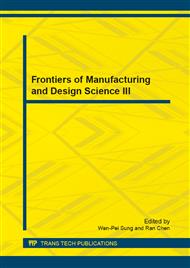p.906
p.912
p.917
p.922
p.927
p.932
p.936
p.948
p.953
Finite-Element Analysis and Reliability Test of Power Steering Gear on the Fatigue Performance
Abstract:
The study on power steering gear is less than other auto parts at home or abroad. Compared with developed countries, the independent design and manufacture of power steering starts late, and lacks practical and effective evaluation standards. The combination of the theoretical analysis, numerical calculation and experimental verification is the key technology to optimize the design or test to evaluate the power steering gear’s function and performance. In this paper, the power steering gear’s finite element analysis(FEA) model was built to analyse the fatigue stress and fatigue life of the power steering gear’s components, such as housing, input shaft and output shaft. and the fatigue test of the power steering gear was also designed and implemented. Research showed that, the power steering gear fatigue properties of FEA and reliability test have the same results. The total damage of 4 A-B-C event cycles is less than 1, the steering gear system is judged safe after 4 event cycles per design requirements. Each component of the power steering gear has different maximum average stress. The stress of the sector shaft, the piston and the screws is very close to the yield stress, which is much larger than the other components, and needed to be treated with caution The maximum stresses of the gear housing are a little over the yield strengths at the stress of 6,118 lbs, which is more dangerous than the other components, and great attention should be paid to it.
Info:
Periodical:
Pages:
927-931
Citation:
Online since:
December 2012
Authors:
Price:
Сopyright:
© 2013 Trans Tech Publications Ltd. All Rights Reserved
Share:
Citation:


